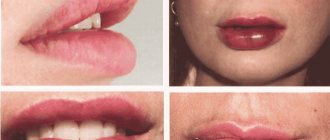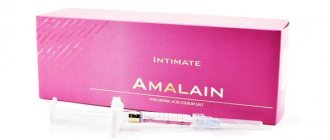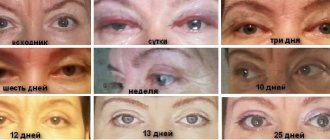- 91934
- 09-10-2020
- Author: Mysekret Team
- 0
Hyaluronic acid is an excellent tool for lip plumping and rejuvenation. The procedure with fillers is standard for contouring and is considered safe. However, like any cosmetic product, hyaluronic fillers have a number of contraindications.
If you do not follow the recommendations for skin care before and after lip augmentation, complications may arise that will affect the rehabilitation period and the final result. How to remove bruises on the lips after hyaluronic acid is described below.
Discomfort, bruising and swelling after contouring
Edema is the excessive accumulation of fluid in extracellular tissues. It is a standard reaction of soft tissues to damage and accompanies most medical interventions, including contouring. Normally, swelling after contouring should go away within a few days (up to 2 weeks), but it can persist longer. The percentage of development of undesirable consequences as a result of correction of cosmetic defects with fillers is small, but not only the doctor, but also the patient should be aware of them.
To one degree or another, swelling after contouring of the cheekbones, lips and other areas almost always develops; the question is how severe it is. Tissues react with swelling to microtraumas; the ability of the filler to accumulate and retain moisture also plays a role. The normal period for swelling to resolve is several days, up to two weeks; if the swelling lasts longer, most likely:
- there is an individual reaction of the body, in particular, a previously unknown allergic reaction;
- the drug was chosen incorrectly;
- the cosmetologist used an excessive amount of gel;
- the doctor performed the manipulation incorrectly.
Hematomas (bruises) occur due to microtrauma of blood vessels as a result of injections. Minor bruising is normal during injection procedures. Severe manifestations are usually associated either with vascular insufficiency or with the low qualifications of the doctor who performed the procedure. To ensure that swelling with hematomas goes away as quickly as possible, various local and systemic agents are used (in particular, products with heparin, Traumeel ointment, compresses).
If your face hurts and feels tight after contouring , you can talk about an individual reaction to the injection of filler. This symptom is usually associated with swelling 1-2 days after the procedure and subsequently goes away on its own. Regular painkillers will help relieve pain.
Recommendations after lip augmentation
When the procedure is completed, the main period of care begins. Initially, severe redness and swelling may appear. The process is considered natural. Over time, such phenomena disappear.
Injection marks may also be visible. They are especially pronounced in the first two days. Then the swelling and inflammation go away. Lips acquire the desired shape.
There is no need for long-term rehabilitation after lip augmentation using injections. However, it is necessary to understand that the sensitivity of the skin in the affected area will increase. Therefore, it is highly recommended not to touch or rub it in the first few days. Additionally, massage is prohibited. If the patient is hypersensitive, an anesthetic ointment can be used. The doctor will prescribe a suitable drug.
You can massage the lip area only 4 weeks after the injections, unless the cosmetologist says otherwise. In this case, exposure is permissible only after the swelling has subsided. To speed up healing, you can use Panthenol. Additionally, the following recommendations must be observed:
- during the first week it is better not to use decorative cosmetics;
- you must stop drinking alcohol;
- on the first day, the consumption of hot foods is prohibited;
- until the lips have healed, it is better not to smoke;
- During the recovery period, you cannot do permanent makeup or use peeling.
Excessive physical activity is prohibited. They can be resumed after 7 days if the patient feels well. Despite the fact that the lips themselves are not involved during physical activity, the temperature rises. This can slow down the healing process. Additionally, sunbathing and tanning in a solarium are prohibited. Sauna and steaming procedures are generally prohibited. It is better not to swim in the pool or sea temporarily, as this can lead to allergies or irritation, as well as infections.
Inflammatory processes at injection sites
A minor inflammatory reaction is considered a variant of the norm - it develops as a result of a foreign substance entering the body (despite the complete biocompatibility of hyaluronic acid with the human body, fillers trigger standard protection against “external invasions”). If the process takes place in 1-3 days, everything is fine, if it persists for a longer period:
- an infection has penetrated into the tissue - with injections (due to improper treatment of the skin before injections, or the use of a low-quality drug or consumables);
- the injection provoked an exacerbation of the infection, which was “dormant” in the tissues;
- There are autoimmune pathologies, against the background of which, as a result of the injection of filler, the patient begins to experience uncontrolled inflammatory reactions in the treatment areas.
To effectively treat a pathological condition, it is important to accurately determine the cause of its development; based on the results, the patient may be prescribed antibiotics, NSAIDs, antihistamines or steroids.
Lumps, lumps, fibrosis, granulomas
Consequences such as granulomas, fibrosis, compactions, lumps, contour plastic surgery usually result from non-compliance with hygiene rules, the use of uncertified fillers or the illiterate work of a doctor. Fibrous capsules are also formed due to the wrong choice of filler type or dosage; they should be treated with antibiotics and anti-inflammatory drugs. Lumps and lumps can resolve on their own; granulomas can be removed surgically.
Possible side effects
The choice of drugs for subcutaneous injections should be approached taking into account their characteristics. The quality of fillers with hyaluronic acid depends on the degree of its purification. It is known that hyaluronic acid, which is of animal origin, has the most pronounced allergic effect, one of the manifestations of which is swelling at the injection site.
All side effects that occur after injections of hyaluronic acid vary in duration and degree of complication.
Among the short-term side effects after injections, the most common are:
- Feeling of discomfort after injection;
- Pain at the injection site of the filler;
- Swelling, redness, cyanosis of the skin;
- Possible hematomas;
- Point necrosis at the injection site.
Short-term complications that are undesirable in nature vary according to the following characteristics:
- The injected substance is visible in the subcutaneous layer - it appears as a pale or white lump.
- Formation of subcutaneous nodes and swelling at the injection site;
- An allergic reaction caused by individual hypersensitivity to the constituent components of the drug.
Very rarely, more serious adverse events are observed, the connection of which with the procedure is conditional. The fact is that, based on the absolute safety of injectable drugs used in contouring, it is very difficult to associate rare manifestations of negative effects with the use of dermal fillers.
Each filler is accompanied by detailed instructions on how to properly insert it under the skin. Strict adherence to these rules will reduce the possible risk of unpleasant complications.
The most common adverse events accompanying a course of plastic surgery using hyaluronic acid injections include:
- Headache;
- Allergic sinusitis;
- Signs of respiratory disease.
These manifestations themselves may be symptoms of a mild respiratory or infectious disease.
In patients who are particularly sensitive to pain, the appearance of headaches is typical as a response to injections.
The most serious, although rare, complication after injection of fillers is a necrotic reaction at the injection site and paralysis of the facial nerve. It is impossible to establish the cause of paralysis, given isolated cases of its occurrence. Necrosis of points after injections also occurs extremely rarely and is easily treated.
Vascular injuries (ischemia, embolism) after contour plastic surgery
Compression of blood vessels occurs when low-viscosity filler enters the vascular lumen or the drug is administered too deeply. During the day, pain increases, unhealthy redness may appear, severe swelling develops, and then necrosis with tissue scarring. This is the most severe, although rare, complication. Reasons for its appearance:
- a significant volume of gel was injected in close proximity to the vessel, as a result of which it strongly compressed it and closed the passage for blood;
- the filler entered directly into the vascular lumen, as a result of which it closed and the blood flow stopped.
Embolism and ischemia are characteristic of areas with an active blood supply - the nasolabial triangle, lips. The injured area is very painful, the area deprived of normal blood supply turns white, and a burgundy or blue mesh forms around it.
This condition requires an immediate response. Only a doctor can stop the situation, for which there are special protocols for administering the enzyme hyaluronidase and other methods of medical care to the patient.
Treatment of hematomas on the face
Since childhood, each of us remembers that if there is a bruise, it is better to apply something cold, then the black eye will be smaller. Ice is your universal assistant. By narrowing the lumen of the capillaries, it prevents the appearance of hematomas and, of course, reduces pain.
It is not recommended to apply ice directly to the damaged area. You should wrap it in cloth. For example, gauze. Direct contact of ice with the lip can cause local frostbite and damage to the delicate epithelium of the lip. This method is not so effective, but it is handy and very convenient.
Your sleep plays a significant role. Namely, how you sleep. Try not to lie down in the first hours after the procedure. After some time has passed, you are allowed to sleep, but just do not forget to put a couple of pillows so that the level of your head is as high as possible.
Gel protrusions and migration
Migration, protrusion of the gel after plastic surgery is an extremely unpleasant reaction. The gel begins to appear outward, forms unevenness and blackheads, and with very thin skin it can appear as purple or blue spots. The reason for this phenomenon is insufficiently deep injection of filler. If the master injects the gel too deeply, the drug may begin to move to neighboring tissue areas and distort their proportions. The problem can be solved by introducing hyaluronidase, a component that breaks down and removes incorrectly administered hyaluronic acid.
Complications due to the use of non-absorbable gels for contouring
Biopolymer and silicone non-absorbable fillers are prohibited in most countries, but some homeworkers work with them. Patients are tempted by the affordable price and the “forever” result, and completely in vain. Over time, non-absorbable drugs begin to shift relative to the original injection area, distorting facial features. Inflammation and chronic infections often develop, and the body may simply begin to reject the drug. To remove gels, complex and expensive plastic surgeries are required, so do not skimp on beauty and health - in the end you will have to pay a lot more.
In order to avoid unwanted effects after contouring, trust only professionals, strictly follow all doctor’s recommendations, and if you have any disturbing symptoms, do not hesitate to immediately contact the clinic.
Be beautiful and healthy with GMTClinic!











